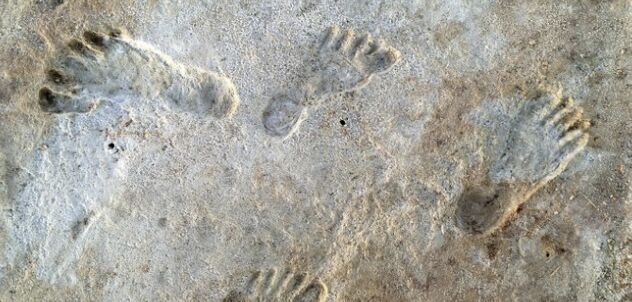New Research Challenges Timeline of Human Arrival in Americas: Footprints Reveal Surprising 23,000-Year-Old Discovery
New research that challenges the belief of when humans arrived in the Americas, citing fossilized footprints that may date back 21,000 to 23,000 years ago. It raises questions about migration and highlights the importance of inclusive research.
New research has provided compelling evidence that challenges the long-held belief that humans arrived in the Americas around 14,000 years ago. The study focuses on fossilized human footprints discovered in White Sands National Park, located in southern New Mexico. These footprints, along with the remains of other animals like mammoths and giant sloths, were preserved in the dried-out banks of a lake that existed during the last Ice Age.
A team of researchers from the National Park Service, the U.S. Geological Survey, and other institutions conducted a comprehensive analysis of the footprints and published their findings in the journal Science. Contrary to previous assumptions, the analysis suggests that these footprints date back to a much earlier period, between 21,000 and 23,000 years ago. This challenges the conventional timeline of human arrival in the Americas and opens up new possibilities for understanding how humans migrated to the continent. The research has faced some skepticism and criticism.
One concern raised by critics was the reliability of the dating technique used in the study. The initial analysis relied on carbon-dating seeds from an aquatic plant found alongside the footprints, which may have absorbed older carbon from the water, potentially skewing the results. To address these concerns, the researchers conducted additional tests using different materials found at the site, such as ancient conifer pollen and quartz grains. The results from these tests align with the original findings, providing further support for the older date range of the footprints.
The discovery of these ancient footprints challenges the prevailing understanding of when humans entered North America and how they migrated across the continent. It raises questions about the timeline of human and megafauna coexistence and the role humans may have played in their extinction. The findings also highlight the importance of inclusivity in research into early Americans. More Indigenous voices are becoming prominent in the field of archaeology, asking different questions and providing new perspectives. While there are still debates and ongoing research on this topic, the study's findings contribute to a growing body of evidence suggesting that humans arrived in the Americas much earlier than previously thought. As technology advances and more archaeological sites are discovered, our understanding of the peopling of the Americas is continually evolving.




